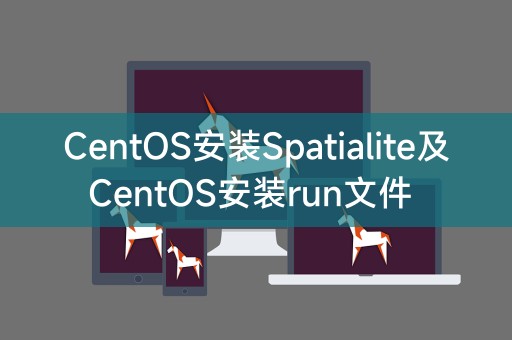
php editor Xinyi brings you a detailed tutorial on CentOS installation Spatialite and CentOS installation run file. Spatialite is a lightweight spatial database that can be installed and configured on CentOS systems. Through this tutorial, you will learn how to install Spatialite on CentOS and understand how to use the run file to install it. Whether you are a beginner or an experienced developer, this tutorial will help you through the installation smoothly and provide you with some practical tips and advice. Let's explore how to install Spatialite on CentOS and install the run file on CentOS!

The following are the steps to install Spatialite on CentOS:
1. Open a terminal and log in as root user .
2. Run the following command to update the system package list:
```
yum update
3. To install Spatialite’s dependencies, run The following command:
yum install libspatialite-devel
4. Download the Spatialite source code package. You can download the latest stable version from the Spatialite official website. Run the following command to download the source code package:
wget -sins/libspatialite-sources/libspatialite-.tar.gz
Please replace `` with the latest stable version number.
5. Unzip and enter the source code directory, run the following command:
tar -zxvf libspatialite-.tar.gz
cd libspatialite-
6 . To configure and compile Spatialite, run the following command:
./configure
make
make install
7. Once the installation is complete, you can use Spatialite Library to store and query geospatial data.
The following are the steps to install the run file on CentOS:
2. Make sure the run file has execution permissions and run the following command:
chmod x filename.run
Please replace `filename.run` with the actual file name of the run file you want to install.
3. Run the run file and run the following command:
./filename.run
4. Follow the installation wizard of the run file and select the installation directory and other options.
5. After completing the installation, you can run the corresponding commands or start the corresponding services according to the requirements of the installed software.
Through this article, you learned the steps on how to install Spatialite and run files on CentOS. Installing Spatialite can help you store and query geospatial data in a SQLite database, and installing run files allows you to install specific software or run specific tasks, by following the above steps you will be able to complete these operations successfully.
In Linux systems, the `tar` command is a very commonly used command for creating and extracting .tar files. To create a .tar file, you can use the following Command:
tar -cvf filename.tar /path/to/directory
Please replace `filename.tar` with the actual file name of the .tar file you want to create, and ` Replace /path/to/directory` with the path to the directory you want to compress. To extract the .tar file, you can use the following command:
tar -xvf filename.tar
The above is the detailed content of CentOS installation Spatialite and CentOS installation run file. For more information, please follow other related articles on the PHP Chinese website!




